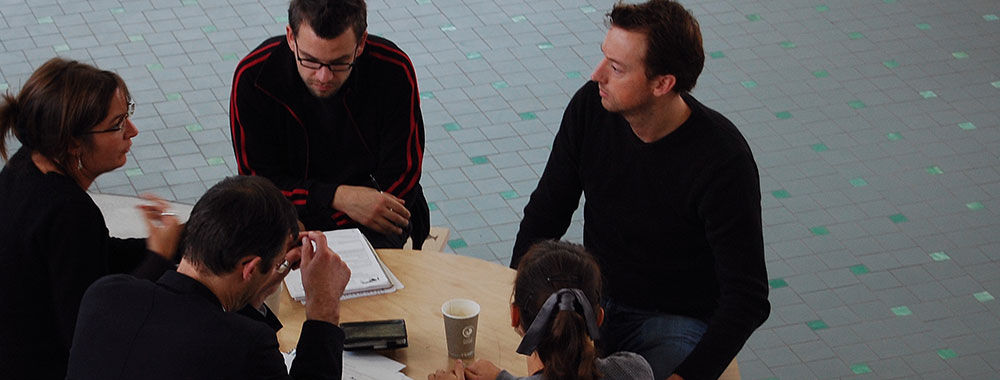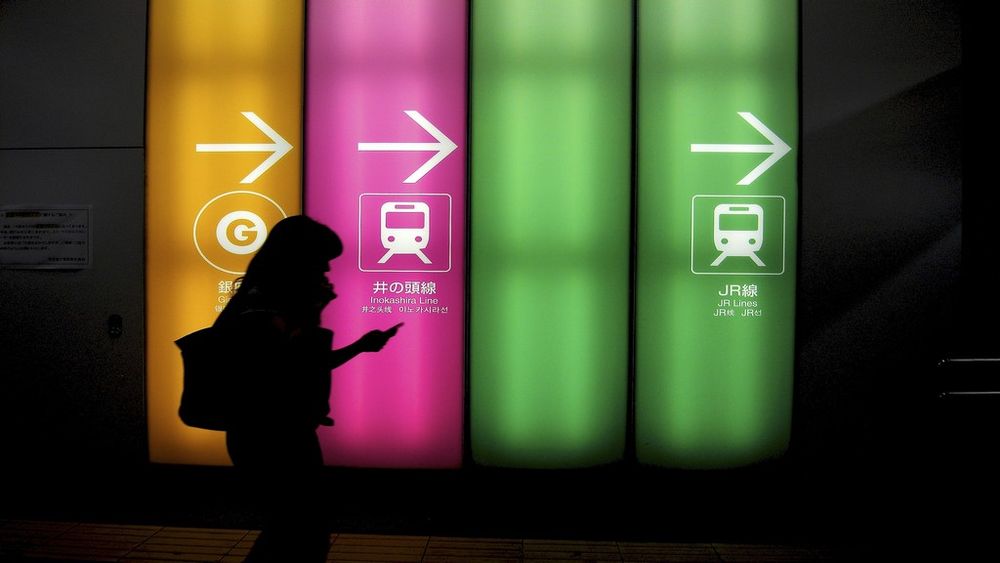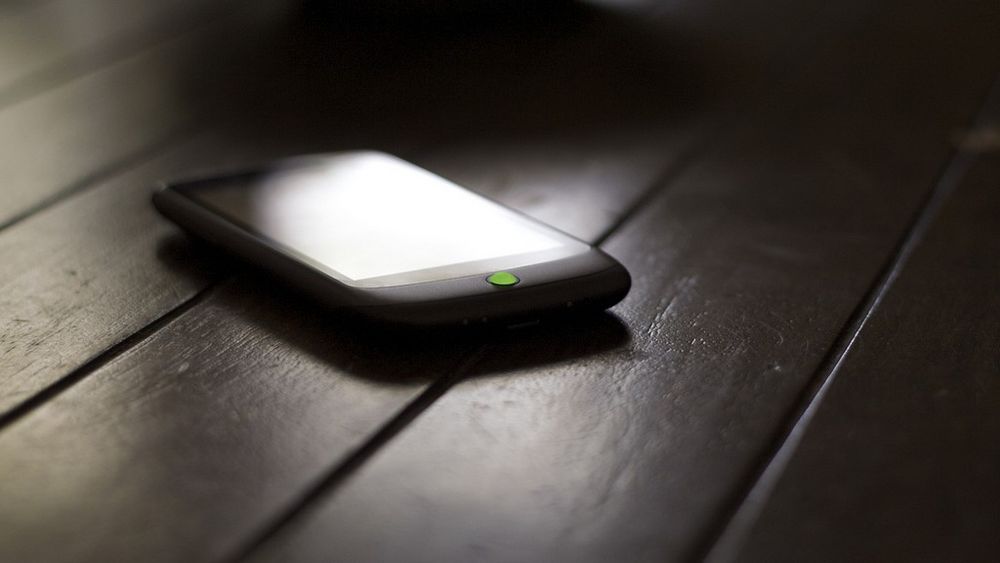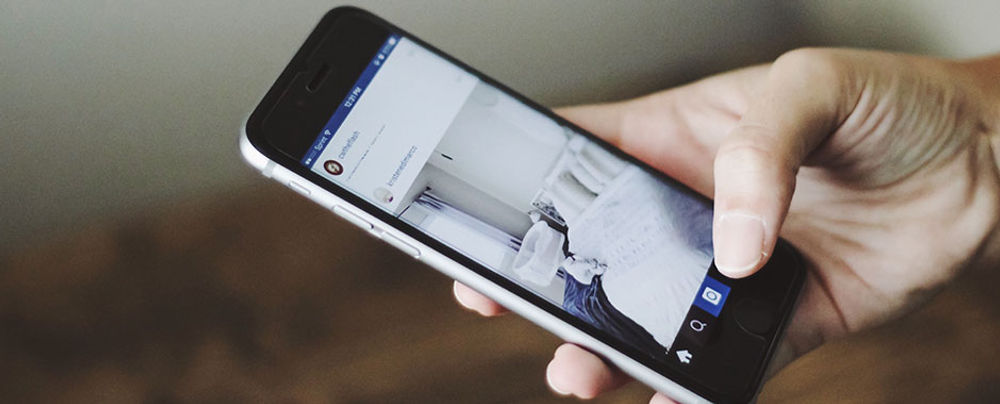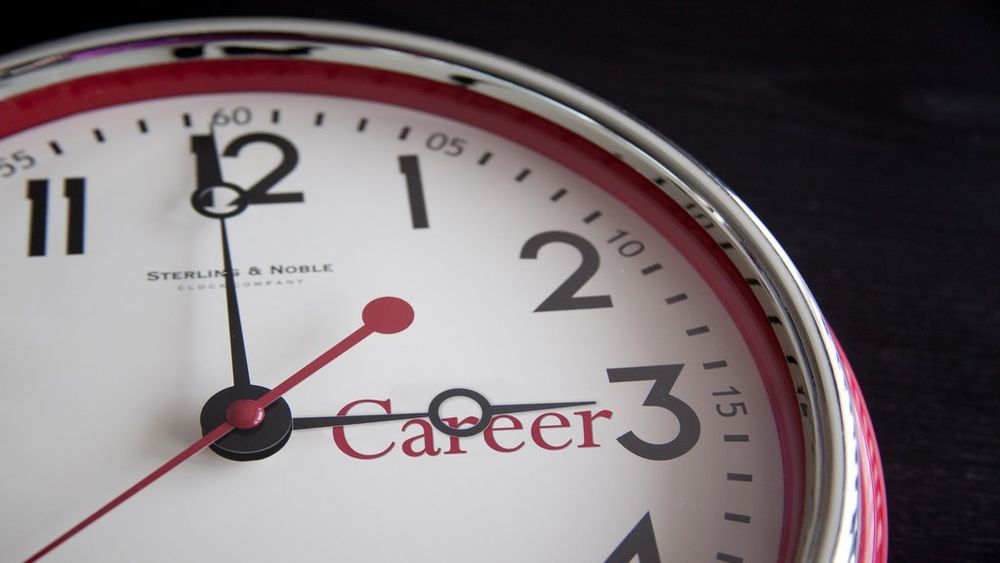If there’s an occupation that is 100% linked with the public’s idea of what design is all about, it’s graphic design. From the familiar golden arches of the McDonald’s brand to the typography and colors of movie posters, graphic designers create some of the most iconic and ubiquitous designs around us. So why would a graphic designer like you want to change your career to UX design? Well, for one, much can be said about the sense of satisfaction and fulfillment derived from getting “under the hood” of the products you work on rather than working on the exterior. Furthermore, according to PayScale, the average salary for a graphic designer in the United States is $41,000(1), but the same for a UX designer is a whopping $74,000(2).![]() Whatever the reason for the move, it’s clear that it can be a very rewarding one. But how do you go about switching from graphic design to UX design? Let’s find out.
Whatever the reason for the move, it’s clear that it can be a very rewarding one. But how do you go about switching from graphic design to UX design? Let’s find out.
What is User Experience and User Experience Design?
The user experience (UX) is what a user of a particular product experiences when using that product. A UX designer’s job is thus to create a product that provides the best possible user experience. How does that happen?
Well, it starts with a lot of research. You can’t create anything of value to a user unless you understand what kind of problems they want to solve and how you can solve those problems, so that the user will want—or better still, need—your solution. You can only get that understanding by interacting with users.
UX designers tend to be concerned with, as you can see from the image below, 3 primary factors: the look of a product, the feel of that product and the usability of that product.
![]()
The look of a product is all about creating a product that has visual appeal and which, in particular, harmonizes with a user’s values and captures the spirit of what they expect in that product. In other words, it has to not only look nice, but look right too. In doing so, it establishes a bond of trust and credibility between the product and the user.
Next is the feel, which is really about developing products that are “a joy to use”. That is, whether you’re interacting with them or reacting to them, products should provide a pleasurable experience and not just a functional one.
Lastly, usability is the cornerstone of user experience. If a product isn’t usable, the experience of using it can never be good. UX designers want to create products which can, ideally, be tailored to meet a user’s specific needs, but which provides functionality that is predictable.
If you’re still unsure of what UX design is all about, don’t worry! We’ve got a series of articles which may help you make up your mind—they examine some of the high-level key concepts of UX design in a bit more detail than we can here:
An Introduction to Usability
Usability vs Desirability
What is Interaction Design?
What Do Graphic Design and UX Design Have in Common?
![]()
Emotional Design
Graphic design is about emotional communication through typography, color and images; serif fonts and dark, duller colors evoke seriousness, while san-serif fonts and bright colors tend to bring out a sense of joy or excitement. Graphic designers are hence very often emotional designers who elicit specific reactions in a user. UX design is also concerned with shaping the emotions of the user, although it tends to take a broader, big picture view of the entire user’s experience with the product. On top of focusing on the right typography and colors, UX designers are also concerned with motion design, the tone of the content, and information architecture, among others.
Creative thinking
Graphic designers and UX designers are both equally skilled at creative thinking. For graphic designers, creating visuals that adhere to conventions (and thus communicate effectively) while retaining a sense of originality (to stand out among the competition) requires some serious creative and critical thinking. In the same way, UX designers have to create products that solve users’ problems—and sometimes, conventional solutions aren’t always the best or most appropriate ones.
Prototyping
Graphic designers often create mockups and wireframes of their designs prior to delivering a finished design. It gives a chance for clients to offer feedback on their designs and for them to improve them without having to start from scratch. UX designers create mockups and prototypes too, but these tend to be less focused on the “look” of the product and more on the “feel” of it. Is the prototype useful? Is it usable? Is it desirable? These are the questions a UX designer wants answers to.
The Differences between Graphic Design and UX Design
User-focused vs pixel-focused
Graphic designers tend to pursue pixel perfection in their designs. Ensuring that texts have perfect kerning and colors conform to brand guidelines often take up a significant portion of graphic designers’ jobs—and for good reason, too. UX designers, however, are primarily focused on users. They study the interface between users and the product, finding ways to ensure that the product answers to the user’s key needs. And they do so by conducting a lot of research—by talking to and observing users, creating user personas and stories, doing usability testing on the products, and many more. Graphic designers looking to switch career tracks will need to do a substantial amount of work finding out how to conduct user research (more about this a bit later on in the article).
Iterative problem solving
UX design is very much an iterative problem solving process, and it can be very different from what you’re used to doing as a graphic designer. It begins with the identification of a problem; this is often found through user research, and if it’s not, it will then be confirmed through user research. There is no point in solving problems that users don’t care about; they won’t pay to solve those problems, and that means your company won’t make money.
![]()
From the problem identification stage, more research is conducted into how best to solve the problem in a way that the user will be happy with—usually via observations, surveys, ethnographic studies, etc.
This research then informs the product’s design. Designs are then tested with users to see if the research led to the right solutions. The designs are constantly iterated until research confirms that they are good enough.
Once this happens the product is launched, but the design process is not over. The design will be continually tested and user feedback will be taken, thus beginning a new round of user research. Future improvements to the design will be made based on this feedback.
Multi-disciplinary vs specialized
Graphic design is a specialized discipline, and there is a certain level of craftsmanship and set of specialized skills (such as typography and color theory) required to produce great visuals. UX design, on the other hand, is much more multi-disciplinary and involves many schools of knowledge. UX designers have to constantly learn about human psychology, interaction design, information architecture and user research techniques, just to name a few, in order to create the right solutions to a user’s problems. Don Norman, the man who coined the term “User Experience”, explains that user experience covers “all aspects of the person's experience with the system including industrial design graphics, the interface, the physical interaction and the manual.”
The Big Benefit of Graphic Design Experience when Moving to UX Design
Aesthetics
The biggest benefit for graphic designers moving to UX design is that they can make things attractive. A very common misconception about UX design is that good usability trumps aesthetics. On the contrary, good aesthetics have been found to improve the overall user experience of product—by making users more relaxed, creating a positive first impression, and generally just showing that you care(3).
![]()
Aesthetics also help designers communicate with the internal stakeholders in their companies. Ex-graphic designers can present research results in a way that makes stakeholders sit up and really take notice. Graphic design skills are often thought of as optional in UX research, but it would be hard to deny the impact of well-presented beautiful findings. If you do make the change, you’ll need to balance your tendency to make things gorgeous with the need for moving your design projects forward. There are times in UX design when a few scribbles on the back of a napkin are more than enough to get things going; don’t spend 3 days producing a poster when this is the case.
Conventions and trends
Coming from a design background not only means having a good grip on design terminology, but also that you’re likely to be familiar with the conventions and trends in web or app designs. Most times, UX designers make use of standardized conventions (like a toggle switch for on/off states, dropdown list for multiple options, etc.) because users have come to expect these interactions on a website. Graphic designers—especially if you’ve created prototypes in the past—are also familiar with such conventions. That means you’ll adapt more quickly to a UX design role than someone who comes from a non-design background. This might not sound like much, but communication is the core of any UX design project and being able to talk-the-talk is a big benefit.
How to Enhance Your Skills to Make the Jump from Graphic Design to UX Design
Is there a gap between graphic design skills and UX design skills? Yes, but it’s not an insurmountable one. Graphic designers already speak the language of design; they just need to brush up their skills to include those that are unique to UX design.
Once you have those skills, you can start to work them into your graphic design work (because user experience design can inform graphic design just as much as it can inform product design) and start to tailor your CV to highlight your UX skills as well as your graphic design skills.
As we mentioned above, the real key for graphic designers is to understand user research in all its forms. All the courses we’ve highlighted below should address this need to a greater extent.
Online Courses
Interaction Design Foundation
We’d like to modestly present our own course offerings for this, as the Interaction Design Foundation is the world’s largest specialist design education community. Don Norman, the same man who coined the term “User Experience” and who is one of the world’s best known designers, says that we’re “a goldmine of information on interaction design”; Forbes magazine says we supply an Ivy League level of UX design education!
There are three courses that we have put together specifically with a career change or first job in UX design in mind. In User Experience: The Beginner’s Guide, you’ll be introduced to all areas of UX work, learn basic practical skills to conduct UX work, and gain the confidence to work with UX clients as a consultant. In Get Your First Job as a UX (or Interaction) Designer, you’ll find out how to get the experience in UX that prospective employers are looking for, learn to develop a winning cover letter, CV and portfolio to get a UX interview, and negotiate a job offer. And in User Research – Methods and Best Practices, you’ll learn the various methods of conducting user research, and then putting the research results into action.
We also offer a bunch of other courses (32, and constantly growing!) to help you further develop your skills in UX design. The good news is that with a low annual fee, you get access to all of our courses for a year with no additional charges, and you get access to our community too.
You can find out about our other courses here.
Coursera
You might also want to try the folks at Coursera.org, which is a low-cost but high-quality education provider which delivers courses on a wide range of subjects including UX. It does partner with universities and companies to offer courses, Professional Certificates, and degrees, and courses are generally very good. All content on the platform, with the exception of degrees, is available on demand. It’s also worth noting that their degree programs are only available for new applications during set windows. They also recently launched a Google UX Design Professional Certificate to help learners build job-ready skills in under six months.
Udemy
Udemy is the world’s biggest broker of training. They don’t design their own training; rather, they enable course creators to sell their courses on their platform. They offer literally thousands of courses in almost any conceivable subject. The trouble is that Udemy provides no quality control, and while you can find some great courses there, there are a lot of not so great courses too.
Classroom Courses
Nielsen Norman Group
If you have deeper pockets and would prefer to learn in a classroom than learn online, then you might want to check out the classroom courses offered by the Nielsen Norman Group. The group has an excellent reputation and is one of the world’s most respected UX consultancies. They offer their courses in a range of locations, but we can’t guarantee that you’ll find one on your doorstep and you may have to travel some distance to take part in them.
General Assembly
We also think that General Assembly has a great reputation for providing immersive classroom training for UX design. Once again, it’s not cheap but that is always going to be true of professional classroom training. You can choose between part-time or full-time courses. As they’re short, they repeat every few months. They are, however, available only at select locations, and you’ll need to factor travel and living expenses into the total cost, in case you don’t live nearby.
University Courses
We’re not sure that university is the best option for those seeking a change of career direction; it’s not just the money required, but also the time taken. You could be earning and learning using a different method rather than spending 3 or 4 years on a bachelor’s degree or 2 years on a Master’s program. However, if you do decide to go the university route, you’ll want to spend a lot of time researching exactly the right program for you. We’ve got a couple of examples for you here but there are literally hundreds of programs globally and we couldn’t hope to cover them all.
Carnegie Mellon – HCI Programs
York University – MSc in HCI Technologies
We’d urge that you sit down with a calculator and think about the costs associated with going to university before booking a place. HSBC, as reported by Top Universities, found that the average US university course will cost you $36,564 a year (including rent, tuition, books, etc.). (4) Over a 4-year degree, that means shelling out a cool $146,256—and that’s without the costs of a loan to cover those expenses.
But that’s not all—you’ll also have to give up full-time work. According to the US Census Bureau, a non-graduate earns an average of $27,351 per year.(5) This gives us a 4-year opportunity cost (that is, the income that you’ve forgone while in university) of $109,404. That means 4 years at university will set you back a huge $255,660!
![]()
If you don’t know which kind of learning to invest in, that’s OK. We know it can be confusing trying to work out what will add the most value to your career. With that in mind, we’ve put together a piece that walks you through calculating the Return on Investment in learning here; hopefully that will help you decide what’s right for you.
Networking
Once you’ve brushed up your skillset and you feel you’re ready for that first UX role, you might find handy to do some networking. The best opportunities are almost always found when someone already in the field recommends you for a position. One of the best places to start with your networking is LinkedIn. Join some UX groups, start contributing, and build that all important network with your peers. But take it slow; don’t just show up and start asking for a job. You need relationships with people before they will help.
We also offer some awesome networking opportunities to both our members and non-members too. Members can join our global community of UX professionals in the many discussion groups and forums that we provide; we have the largest specialist design community on earth so there are plenty of opportunities to be uncovered there. For members and non-members, we also have local group meetings in many places around the planet. These meetings are completely free to attend and are a great way to meet people doing UX in your home town or city. Find out more at our Community page.
One other useful way to start networking is to follow famous members of the UX design community on Twitter. Not only will you learn a lot from them, you can also interact with their followers (who are likely to be designers like you too). We’ve put together a list of twenty people you should follow on Twitter in the UX sphere here to get your started.
![]()
Mentoring and Feedback
Another great way to develop your career is to work with a mentor in the UX field who has “been there, done it and bought the t-shirt”, at least so to speak. You may find a mentor through your own network nd that’s an awesome way to connect with a mentor, but if you can’t then our IxDF Design League members can access our network of design mentors as part of their annual membership fee.
The Take Away
If you want to change from graphic design to UX design as a career, that’s awesome. It’s not going to be as difficult as you might think either. You just need to get a little training under your belt so that you’re familiar with what it is a UX designer does, and then you can put some of those techniques to work in your current role. Then when you think the time is right, you can start networking and lining up some interviews for your new job!
References & Where to Learn More
Payscale’s research on Graphic Design salaries
Payscale’s research on UX Design salaries
UX Myths: Aesthetics are not important if you have good usability
How much does it cost to study in the US?
Earnings by education: US Bureau Of Labor Statistics





